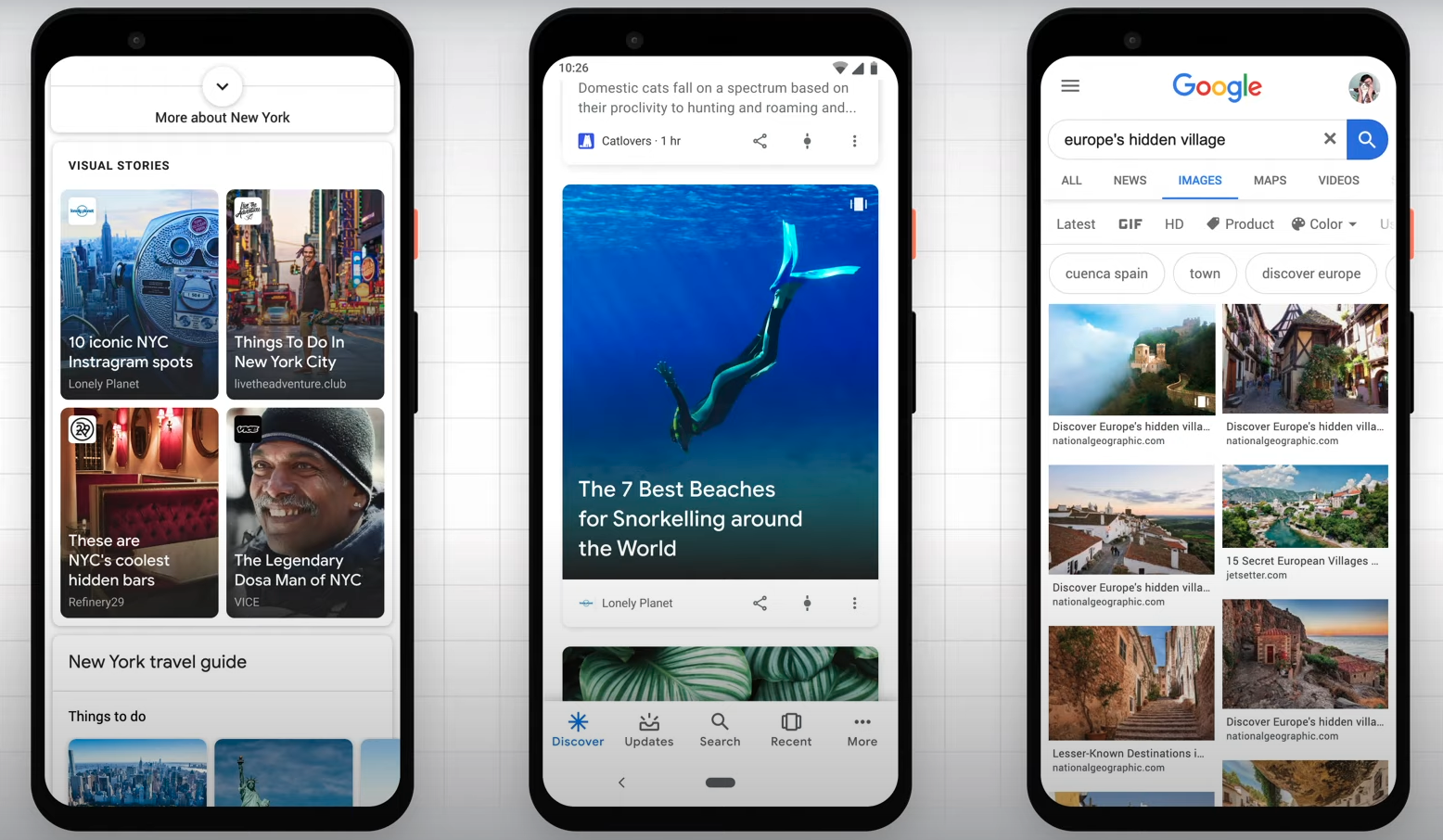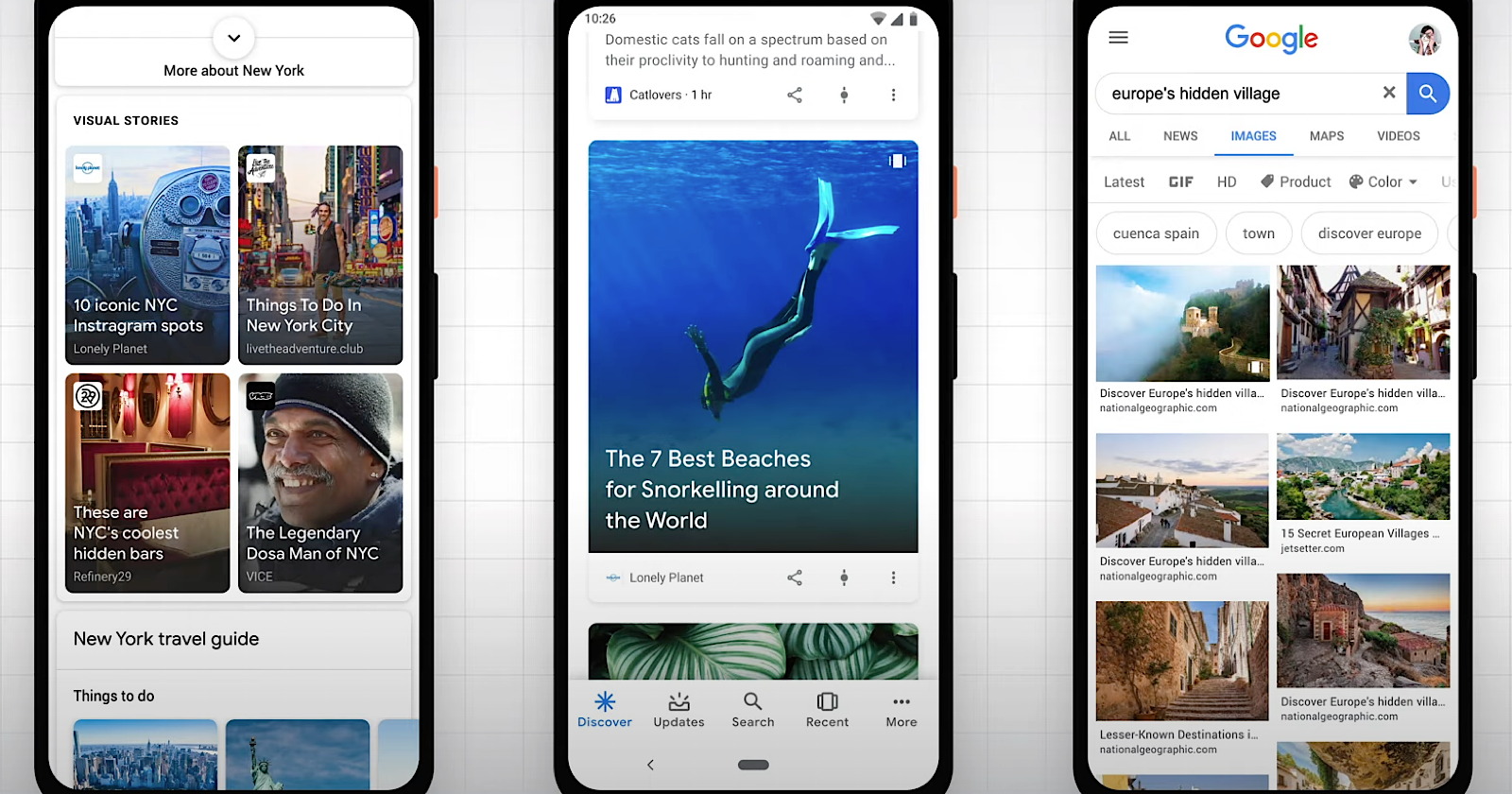Google’s latest Lighting Talks video focuses on doing SEO for web stories and tracking how they perform in search.
Pascal Birchler, Developer Relations Engineer at Google, leads the discussion by breaking down everything from what web stories are, to how to create web stories, to how to insert ads in web stories.
This article will focus on the SEO advice covered in Google’s video. For more general information about web stories see the resources at the end of this article.
SEO for Google Web Stories
In order for web stories to get found and indexed by Google they have to get optimized like any other piece of content.
All SEO practices that apply to regular web pages also apply to web stories.
In addition to following traditional SEO best practices, a few story-specific requirements need to be implemented. For example, site owners need to supply metadata like a poster image and the publisher logo.
Site owners can take advantage of optional story-specific metadata as well. More information about web story metadata is available here.
Advertisement
Continue Reading Below
Properly optimized web stories can appear in Google across Search, Discover, and Images.
In search results, the appearance of web stories can range from a single search result to a visual carousel showcasing multiple web stories.

As an example, when people search for ‘things to do in New York,’ the grid view shows web stories from multiple publishers.
Advertisement
Continue Reading Below
For web stories to be eligible to appear in appear in difference places in Google Search they have to meet certain guidelines.
Most importantly, web stories need to have valid AMP code. A valid AMP story is one that adheres to various amp specifications.
Valid AMP markup allows Google to serve stories via the AMP cache which ensures fast performance and the best experience for users.
Measuring Performance of Web Stories
To measure and improve the performance of web stories in Google Search and Discover, site owners can use Search Console to better understand how Google sees the content.
Various tools and reports in Search Console can help with analyzing traffic, fixing potential issues, and making web stories stand out in Google search results.
Advertisement
Continue Reading Below
If Search Console data shows no impressions for a site’s web stories, use Google’s testing tool to make sure they meet all requirements.
Google’s testing tool allows site owners to preview how the story will look like in search results, which can help determine whether anything needs further tweaking.
Once the web stories get published and validated, Google Analytics can measure how viewers interact with the story.
Google Analytics can track metrics such as how much time people spend viewing a site’s web stories, and whether people click on the call to action links. This data can help guide further optimization efforts.
For more on web stories, see the resources below:
Advertisement
Continue Reading Below


